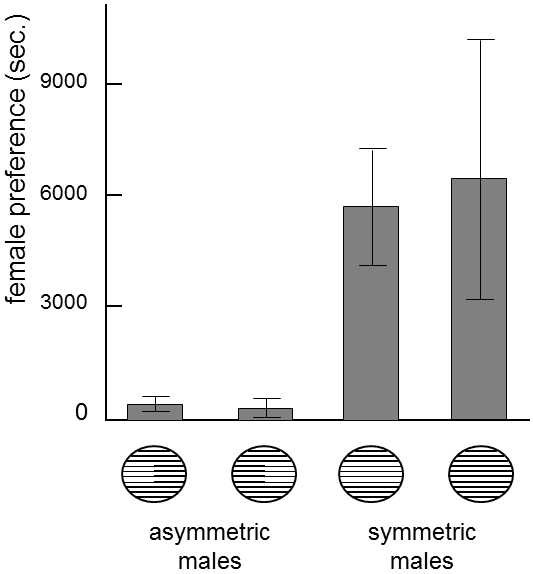XV.5.2 Sensory drive can be responsible for the fixation of genes for certain types of sexual preferences
An individual receives signals from the environment through its sensory organs. This also applies to signals allowing the organism to obtain information on the presence or quality of a potential sexual partner. Any sensory organ has different sensitivity for various types of stimulation. For example, vision better differentiates certain colors or certain shapes and recognizes other colors and shapes less well. This kind of selective sensitivity of the sensory organs and related brain centers can be manifested in evolution as sensory drive (sensory bias, sensory exploitation) (Enquist & Arak 1993; Enquist & Arak 1994). Sensory drive can decide which traits will finally be fixed by sexual selection. If, for example, the vision of a pheasant is better capable of differentiating the horizontal than the vertical dimensions of an object, females will consider a male with long tail feathers to be a larger male than one that is actually larger, but has shorter tail feathers.
In a number of species, individuals with symmetric patterns are preferred (Ridley 1992; Swaddle & Cuthill 1994) (Fig. XV.5). It has been found that even artificial neuron networks capable of learning are able to more readily identify symmetrical shapes than asymmetrical ones (Enquist & Arak 1994; Johnstone 1994). Females preferring males with symmetrical patterns are probably capable of identifying the presence of a male of their species at a much greater distance or under conditions of much worse visibility than females preferring asymmetric patterns.

Fig. XV.5 Female preference for symmetric patterns on the chest of zebra birds. The pattern on the chests of zebra birds Taeniopygia guttata was artificially modified, as shown in the figure. The female greatly preferred males with a symmetric pattern, i.e. spent substantially more time in front of a one-way mirror, through which they saw a male with a symmetric pattern (they could always choose amongst four alternatives). The experiment was repeated six times, in each case with different males and a different female. The segments indicate the standard error of the mean. Modified according to Swaddle and Cuthill (1994).
Even a very weak sensory drive can start a cycle of positive feedbacks that can lead, for example with contributions from the Fisher mechanism, to fixation of genes for preference for a certain trait and simultaneously fixation of the genes for the trait.
